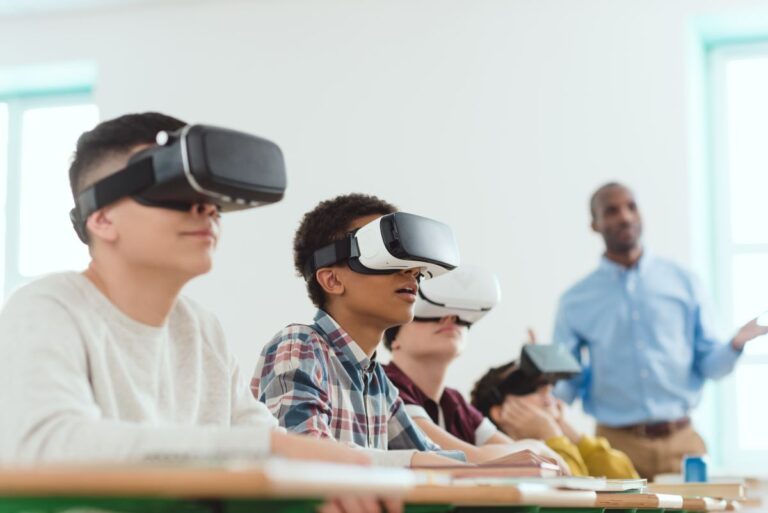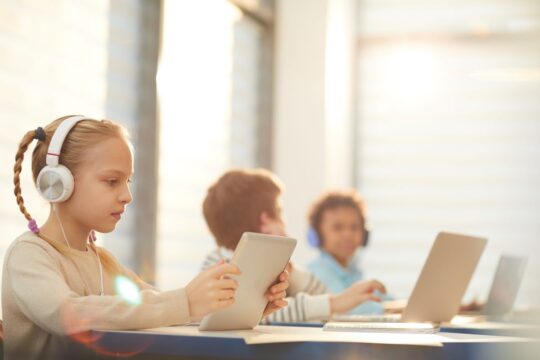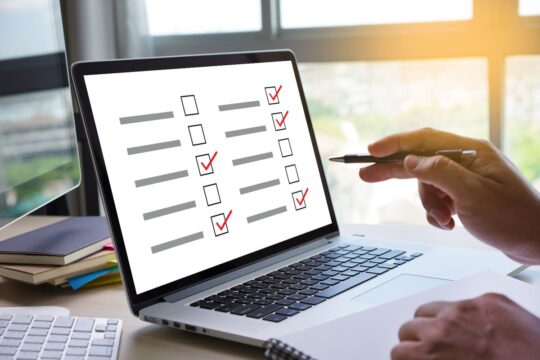Technology has reshaped the way students learn, and virtual reality (VR) is no exception. VR has now made its way into our classrooms offering students an immersive and interactive way to engage with content. From virtual field trips to historical sites to traveling through the human body, students are gaining a deeper understanding of the subject matter.
But like any educational tool, VR comes with its own set of advantages and challenges. Here we’ll take a closer look at what virtual reality is, how it can enhance learning, and some of the pros and cons of incorporating it into the classroom.
While VR offers exciting opportunities to bring lessons to life, it’s important to consider both its benefits and limitations to determine how it fits into an effective teaching strategy.
What is Virtual Reality in Education?
VR uses computer-generated environments to simulate real or imagined experiences. With a VR headset, students can explore places they might never visit in person like traveling the depths of the ocean, or the inside of a human cell. By interacting with these environments, students engage in a way that traditional learning methods might not offer.
The appeal of VR in education lies in its ability to make abstract concepts tangible. For example, instead of reading about the solar system in a textbook, students can “walk” on Mars, study historical events through images, or even step into a VR simulation of ancient Rome.
The immersive nature of VR has the potential to deepen understanding and retention, making it an exciting tool for teachers looking to enhance their lessons.
How VR Enhances Learning
There are plenty of ways VR can be integrated into the classroom, and many of them go beyond just making lessons more entertaining. Here are a few ways VR enhances learning, from virtual field trips to hands-on science labs, and the key benefits it brings to education.
Virtual Field Trips
Not every school has the budget for field trips, but VR can take students almost anywhere you can imagine. For instance, history classes can go to the ruins of Machu Picchu or biology classes can dive into a coral reef—all without leaving the classroom.
Hands-On Science Labs
Virtual labs allow students to conduct experiments in a risk-free environment. They can mix chemicals, dissect a frog, or explore the human body in 3D, all without the limitations of physical lab equipment.
Historical Immersion
Rather than just reading about historical events in a textbook, students can witness them in VR. They can experience the signing of the Declaration of Independence or stand in the trenches of World War I or II– all from the comfort of their seat in the classroom.
Virtual reality in education can bring abstract STEM concepts to life. For example, math students can visualize geometric shapes in 3D, while engineering students can manipulate virtual models of structures before designing their own.
Career Exploration
Students can “try out” different professions through VR simulations, whether that’s performing a virtual surgery, repairing a car engine, or programming a robot.
Special Education Support
VR can offer students with disabilities an alternative way to engage with content. It can provide structured, customizable environments that support different learning needs, whether that means reducing sensory overload or offering interactive social skills training.
The Benefits of Virtual Reality in Education
With so many potential uses, it’s easy to see why VR is an exciting addition to classrooms. Here are some of the key benefits.
Enhanced Engagement
Virtual reality in education can captivate students’ attention and maintain their interest in the subject matter, keeping them focused and motivated, making learning more enjoyable and effective.
Interactive Learning
Students can actively participate in their education, manipulating virtual objects and experimenting in ways that would be impossible in a traditional classroom leading to better retention and deeper understanding.
Accessibility
VR can provide access to experiences and environments that are otherwise inaccessible due to geographical, financial, or safety constraints.
Personalized Learning
VR can adapt to individual learning styles and paces, offering customized experiences that cater to each student’s individual needs.
Collaboration
VR platforms can facilitate collaboration among students, helping students work together on problem-solving activities and allowing them to work together in virtual spaces, regardless of their physical location.
Sparks Curiosity and Creativity
The immersive nature of VR encourages exploration, prompting students to ask questions, make discoveries, and think outside the box.
The Challenges of Using VR in the Classroom
As exciting as VR is, it may not work for every classroom. Some challenges come with adopting this technology. Such as,
Cost
High-quality VR headsets can be expensive, especially for schools with tight budgets. The initial investment in VR hardware and software can be prohibitive for many educational institutions.
Accessibility and Health Concerns
Not all students can use VR comfortably. Prolonged use of VR can lead to issues such as eye strain, motion sickness, and discomfort, which may affect students’ well-being. Additionally, some students might struggle with the technology due to disabilities or sensory sensitivities.
Technical Issues
VR systems can be prone to technical difficulties, which may disrupt the learning process and require additional support and maintenance.
Potential for Distraction
While virtual reality in education is engaging, it can also be overwhelming. Without clear guidelines, students might lose focus on their learning objectives.
Limited Content Availability
While VR content is still growing, not every subject has high-quality, curriculum-aligned resources compared to traditional educational resources.
Making VR Work in the Classroom
If you’re interested in using VR, consider free or low-cost VR apps, like Google Expeditions or VR museum tours, this is a great way to introduce students to this technology without requiring expensive equipment. Even using a smartphone with an affordable VR viewer, like Google Cardboard, can provide a glimpse into the possibilities.
Despite these challenges, the potential benefits of VR in education are substantial. By thoughtfully integrating VR into the curriculum, you can create a dynamic and interactive learning environment that inspires curiosity and fosters a deeper understanding of the world around us.
Educators never stop learning; check out our available graduate degree programs to hone your skills and promote lifelong learning and academic excellence.




